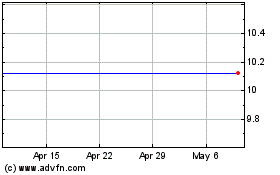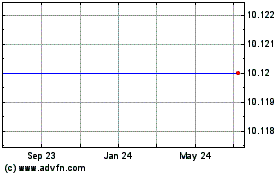Rainy-Day Funds Account For Half Of Big Banks' Earnings
October 26 2010 - 2:45PM
Dow Jones News
Call it steroids for bank profits.
The biggest U.S. banks virtually doubled their collective
earnings in the third quarter just by injecting $8.1 billion into
net income from funds they'd set aside to cover loan losses.
There are 18 commercial banks in the U.S. with at least $50
billion in assets, and together they earned an adjusted $16.8
billion in the third quarter. Of those profits, nearly half, or
48%, were from drawing down what bankers call loan-loss reserves,
according to an analysis by Dow Jones Newswires. A year ago, the
same 18 banks earned $6.2 billion in quarterly profits; at that
time, they added more than $7.8 billion to the same reserves, a
move that reduced their profits.
Lenders are likely to disclose more releases from reserves for
quarters to come. The reason: American banks set aside so much
capital for loan losses during the financial crisis that they still
hold bigger reserves than at any other time in modern history,
according to Moody's Investors Service Inc.
"Going back to 1948, banks' reserves, as measured by total loans
outstanding, are at the highest levels we've ever seen," said
Gerard Cassidy, analyst at RBC Capital Markets.
At the heart of the issue is a set of arcane corporate
governance accounting rules that call for banks to release
loan-loss reserves as soon as they don't expect to need them, even
against the protest of some bank officials. The sharp reductions in
loan-loss reserves illustrate how starkly banks' economic forecasts
have improved in recent months, even as borrowers continue to face
persistently high unemployment and a slumping U.S. economy.
For borrowers looking for capital, the shrinking loan-loss
reserves at banks also show how lenders have pulled back from loans
to riskier borrowers in the wake of the financial crisis.
J.P. Morgan Chase & Co. (JPM) earned $4.4 billion in the
third quarter, in part because it released $1.7 billion from the
bank's loan-loss reserves. During a recent conference call with
investors, Chief Executive Jamie Dimon told investors, "We don't
release reserves because we want [to hit] earnings targets or
something like that. We release them because we have to." He called
the rules "silly" and said they promote the industry's history of
boom-and-bust cycles; banks are unable to build an extra cushion of
reserves in good times, and then have to build such reserves when
loan problems surface.
But as banks' lending activity and revenue have fallen in the
last two years from overheated levels before the financial crisis,
the sharp reductions in reserves have been a great help to big
banks's earnings.
In fact, releases from reserves eclipsed earnings at two big
banks. Fifth Third Bancorp (FITB) earned $238 million in the third
quarter after the Cincinnati regional bank released $500 million
from its loan loss reserves. KeyCorp (KEY), in Cleveland, earned
$219 million after releasing $263 million from reserves.
At other banks, draw-downs from reserves accounted for the vast
majority of third-quarter profits. Of Citigroup Inc.'s (C) $2.2
billion in earnings, 92% came from reserve releases. Similar
releases accounted for 82% of earnings at Capital One Financial
Corp. (COF) in McLean, Va., and 65% at Huntington Bancshares Inc.
(HBAN) in Columbus, Ohio.
Two other regional lenders reported smaller losses after
releasing reserves. Marshall & Illsley Corp. (MI) in Milwaukee
lost $144 million in the quarter, but released $128 million. Zions
Bancorp (ZION) in Salt Lake City, lost $47 million and released $51
million.
Banks' moves to shrink their reserves are also a reflection of a
decade-old fight between investor advocates and regulators.
The Federal Deposit Insurance Corp. and the Office of the
Comptroller of the Currency want banks to set aside money based on
expected losses over time--and they prefer banks use longer time
horizons. Said Cassidy: "Regulators have never seen a reserve they
didn't like. In their view, more is better."
The Securities and Exchange Commission, on the other hand, has
in the past slammed banks for setting aside too much capital for
loan losses and using the fat reserves to pad earnings. In the late
1990s, the SEC questioned the loan-loss accounting used by
Atlanta-based SunTrust Banks Inc. (STI), and the bank agreed to cut
provisions.
In the third quarter, SunTrust earned $153 million after
releasing $75 million from its reserves.
-By Marshall Eckblad, Dow Jones Newswires; 212-416-2156;
marshall.eckblad@dowjones.com
Hudson City Bancorp (NASDAQ:HCBK)
Historical Stock Chart
From May 2024 to Jun 2024

Hudson City Bancorp (NASDAQ:HCBK)
Historical Stock Chart
From Jun 2023 to Jun 2024
